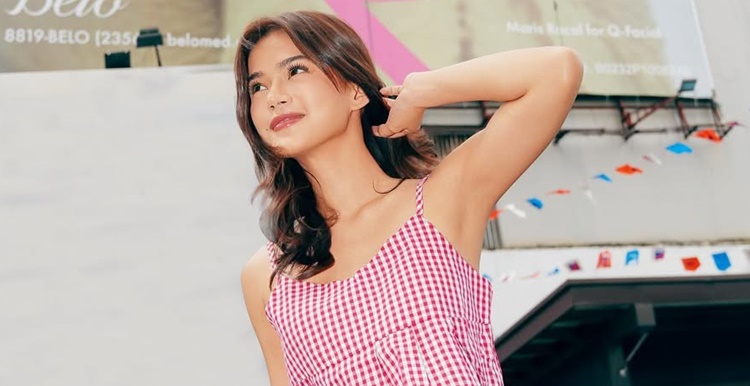
Influential designer and creative director Clare Waight Keller on her move from Givenchy to Uniqlo, "re-defining what luxury is today" – and how Seoul street style is predicting what we wear. Last week, Clare Waight Keller flew from London to Tokyo, grabbed some fabric swatches, and decided what millions of people will wear in September 2025. "I don't have a time machine," says the 54-year-old designer, who is now the creative director of Uniqlo, the global fashion chain.
"But at this point, I've fine-tuned my fashion sense to live in the future," she tells the BBC from her home in Cornwall. "It's my job to see what will happen before it does." If that sounds far-fetched, consider Keller's track record as something of a fashion intuit.
She began her career at Calvin Klein during its early 1990s, Kate Moss heyday, then joined Tom Ford's team at Gucci around the year 2000. As creative director of Chloé in 2011, Keller helped develop the pale blush colour – called "millennial pink" by fashion theorist Véronique Hyland – that first appeared in floaty chiffon dresses and their corresponding Chloé perfume boxes, defining the era's more muted take on "girly" style, one that included a wider and more nuanced spectrum of feminine power. In 2017, Keller decamped for Givenchy, where her long-sleeved wedding dress for Meghan Markle, the Duchess of Sussex spawned thousands of imitations just days after debuting in 2018.
Even today, six years later, the boat-necked silhouette is echoed everywhere, from luxury labels like the Row to high-street brands like Bebe. "You can't underestimate the design of that dress on young women," says Chloe Lee, 25, founder of the consumer trends newsletter Selleb , which tracks what Gen Z consumers are buying. "We were all in high school or college when we saw it.
For us, it is the idea of a princess bride, or at least the starting point for one." Keller is proud of her work with each label, and admits she "constantly" searches for old designs on resale platforms like eBay and Vestiaire Collective . But in 2020, she knew it was time for another change.
"Post-Covid was a watershed moment for me in terms of, 'Right, what's the next 10 years of style going to look like? And how can I be part of the future of fashion?'" she says. "I don't think you can do that right now without redefining what luxury is today." But Givenchy, Chloé and Gucci are not Uniqlo, a brand selling $49 (£38) trousers in 25 countries worldwide.
Keller says that's the whole point: "Through resale platforms, anybody can get a hold of designer pieces for reasonable prices." She's right: At Uniqlo competitor JCrew, cashmere sweaters cost about $150 (£116). On resale platform TheRealReal, nearly new versions from Fendi, Jil Sander and Keller's old haunt, Chloé, cost the same.
Keller says the price-flattening won't discourage shoppers at mid-priced stores, but it will force the labels to better prove their value. "Expense isn't luxury. Quality, innovation, excitement – that ' s luxury," she says.
"How can we use fabric technology to make clothing last longer, look better, and have more versatility on the body? That's luxury. I'm a yarn nerd," she grins. "I went to Uniqlo because they have the tools to build a better fashion system.
The yarn, the fabric tech – it's incredibly sophisticated." Uniqlo's sustainability claims have been a sore spot for environmental commentators who claim, correctly, that its synthetic fabrics won't biodegrade, and could leech microplastics into the soil if they end up in landfills. In response, the brand has added "repair studios" in global flagships to mend things like torn hems and also to "adopt" clean, unwanted clothing for charity redistribution.
More like this: • Bella Freud: 'Fashion has power' • Cindy Crawford on beauty and 'age maintenance' • 'Vintage has become its own status symbol' Shoppers are buying into Uniqlo's vision, it seems , and the brand is growing. "How Uniqlo could become what Gap used to be" was the title of a Forbes article that explored how Uniqlo's parent company is expanding its North American store count. "Their t-shirts have always been the best – their shape really holds up – but lately, the trousers have just been fantastic," says Laurel Pantin, a stylist for Vogue and Harper's Bazaar and the founder of the popular Substack newsletter Earl Earl , which focuses on attainable fashion hacks.
"You can tell there's a lot of intention behind the design." In September, Uniqlo unveiled a new "wide leg straight jean" at Keller's direction. "The easiest way to know what pants you're going to wear next year is just to look at what the 18-year-old girls are wearing this year," says Keller.
"You might not like it right away! It's a new silhouette...
But soon, your eye will adjust." According to shoppers, "soon" is now: the jeans are sold out at Uniqlo. And next autumn, she predicts, will bring a load of fuzzy, furry coats – essentially, a hug you can buy and wear around town.
Keller's meticulously hand-sewn couture gowns may have been worn by Rihanna and Cate Blanchett, but the designer is not anti-tech. She says "it's inevitable" that she now uses artificial intelligence as part of her process. "You know those flocks of birds that suddenly swarm and move somewhere else? That's how AI frames trends.
You see these tiny data points on how people are shopping, and then something shifts. All the dots move." Keller sees each of those dots as a consumer purchase, and tracking its movement as a big part of her job.
"We get these data sets telling us how people shop. Knowing that, how can we better design for them? I'm obsessed with that! But I have to tell you something important." She leans into her Zoom camera as if someone in her living room is listening in.
"Once you have data, your information is already old. It's already happened..
. Where's the newness? How do people find new things? That's what I need to make sure I'm always tracking." Keller says her twin daughters and son, all Gen Z, are vital to the search.
"Without them, I don't know if I would have done my Reformation collection," a capsule line of 14 jewellery pieces like hammered silver cuffs and chunky link earrings. "My daughters are over the moon. These girls in their early 20s who have access to everything on their phones are still obsessed with this LA brand because they wandered around, got lost and walked into their store once.
.. A machine can't tell you that'll happen.
" Keller isn't just paying attention to her Gen Z children and their British friends. She's also been making pit stops to Seoul, South Korea in between work periods at Uniqlo's Tokyo headquarters. "There's a big café society happening over there," she says.
"K-pop and K-beauty are driving this extremely fashion-forward moment for Korea, and that's driving the rest of the world, or you know, it will be." Does that include major couture houses in Europe? "Absolutely," says Keller, who recommends taking a peek at Ader Error, the Seoul-based label run by an anonymous collective of Korean designers. "They're one of the coolest brands out in Seoul at the moment," she says, noting their slouchy kilts and denim bomber jackets as examples of South Korea's new youth style.
"Give it five to 10 years and their fashion designers are going to be coming through to [European] design houses for sure." Does Keller ever consider coming back through those same design houses, perhaps as creative director for an even bigger luxury house? She shrugs. " Time named me the most influential designer in the world in 2019," she says.
"I thought, at the time, that it was the greatest honour I could have. I'm still so grateful, but you know what? Now I walk around outside in Paris or London or Japan, and I see three random guys wearing a coat I made for Uniqlo. They want to live their daily lives in this coat! That sense of achievement is really huge.
" -- If you liked this story, sign up for The Essential List newsletter – a handpicked selection of features, videos and can't-miss news, delivered to your inbox twice a week. For more Culture stories from the BBC, follow us on Facebook , X and Instagram ..














